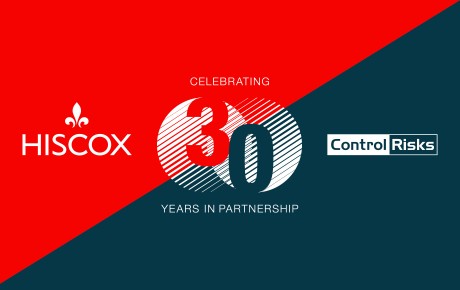
Active shooter incidents on the rise in the US
In 2021 the Federal Bureau of Investigation (FBI) recorded 61 active shooter incidents with 103 people killed and 140 wounded (excluding the assailants themselves). With areas of commerce particularly vulnerable, more attention is being paid to why these attacks occur, how businesses and other organisations can prevent an attack and, if the worst should take place, how to mitigate the effects.
Define an active shooter
The FBI’s definition of an ‘active shooter’ is “one or more individuals actively engaged in killing or attempting to kill people in a populated area”, with their figures excluding some incidents like domestic violence and gang related activity. Back in 2019 there were 30 such incidents rising to 40 in 2020.
Last year, however, saw a 50% rise to 61 incidents. “That’s a pretty dramatic increase on 2020,” says Andre Simons, former FBI Unit Chief and Supervisory Special Agent, and now Principal within Control Risks' Crisis and Security Consulting practice, who added that areas of commerce from retail premises to offices, remain the most frequent target areas. In 2021, FBI statistics show that 52% of attacks took place in these areas while open space was the second most common at 31%.
Surprisingly perhaps, given their high-profile nature, only 3% of active shooter incidents took place in an educational establishment but, as Simons says: “There is a decided and pronounced ripple effect because [such an attack] is so egregious…it captures attention.”
Looking more closely at the attacks in areas of commerce, 28 out of 32 attacks in 2021 happened in areas open to pedestrian traffic. “This may reflect the desire of some attackers to target unsuspecting and potentially vulnerable persons engaged in routine, day-to-day activities,” says Simons.
“This may reflect the desire of some attackers to target unsuspecting and potentially vulnerable persons engaged in routine, day-to-day activities,” says Simons.
The employee threat
In areas of commerce closed to pedestrian traffic, such as most manufacturing facilities and offices, over half the attacks (54%) recorded by the FBI were carried out by current employees, while over a quarter (26%) came from former employees. “This may highlight the need for vigilance in access control,” warns Simons, around the “ability of a former employee to be able to come back and circumnavigate security obstacles.” Relatedly, employee terminations often create “flashpoints” for potential violence within the first two weeks after notification of separation. However, some terminated employees returned to their place of previous employment months or even years after their separation to perpetrate an active shooter attack; a stark reminder of the importance of long-term threat management and monitoring.
One critical factor for businesses to consider, says Simons, is how employees are notified of termination, with an eye to reducing any perceived humiliation as experienced by the employee during the dismissal process. “When notifying employees of separation, employers should strive to avoid or minimise any aspects that might come off as humiliating or degrading.” Simons recommends avoiding delivery of negative critiques of the employee and refraining from using condescending or disrespectful language during the notification.
No single motivation
Turning to why individuals choose to go down a path of violence, finding a single motivation is no easy task, says psychologist Terri Patterson – a former Executive and Special Agent with the FBI, and now a Principal with Control Risks. “Years of research have shown us that violence is multi-determined and typically motivated by a combination of complex factors. Some of those factors have been shown to be dispositional in nature, which may drive a desire for infamy, notoriety and omnipotent control. Other factors, such as externalisation of a personal or ideologically-based grievance, can fuel the justification or rationalisation for acts of violence.” In addition, Patterson adds, active shooters often have “socially maladapted coping strategies” which means when they experience an interpersonal conflict, it may put them on a pathway to violence.
It’s multiple stressors, however, that can serve as the trigger when these factors are present. “Stress is often a precursor to violence,” says Patterson, who adds that rising stress levels throughout the US are likely to have contributed in some way to the increase in active assailant incidents reported by the FBI. In 2021, as in other years, the American Psychological Association (APA) conducted a survey on stress in America. Results indicated increased levels of stress as a result of the pandemic impacting key areas of functioning. “Personal finances and conflict with family and friends are major stressors for people and they continue to emerge prominently in survey data,” says Patterson. Last year, 57% of those surveyed by the APA reported they were stressed about personal finances and this has gone up to 65% in 2022. “We have a population that is stressed and vulnerable...which will likely correlate in 2022 with continued elevated levels of violence.”
“We have a population that is stressed and vulnerable...which will likely correlate in 2022 with continued elevated levels of violence.” says Patterson.
How businesses respond
For businesses and organisations dealing with these situations, there is a key role to play in both preventing possible employee active shooter attacks and, if they do happen, taking the right action to help employees recover. “The 2021 FBI report, alongside multiple other sources of data, points to a rising trend in gun violence across the US,” says James Short, Senior Underwriter within the Hiscox London Market Political Violence team. “Regrettably 2022 appears to be following this same pattern which means how organisations continue to prepare for, and manage an incident of gun violence is of growing importance.”
“The 2021 FBI report, alongside multiple other sources of data, points to a rising trend in gun violence across the US,” says James Short.
But if something does happen, businesses need to act quickly for the wellbeing of their employees whether they were wounded in an attack, were witnesses, or even weren’t involved. “How employees recover from a violent incident [in the workplace] depends in part on how those in positions of authority respond. It’s important for the impacted employee to feel valued and cared for as they move through the stages of shock, anger, and acceptance in response to an act of violence. A robust response to a violent incident on the part of the employer can play an important role in the return to a normal, healthy, productive workplace,” says Patterson.
Crisis management support
“A Malicious Attack insurance policy can play an important part in that readiness, response and recovery,” adds Short, “through the post-incident crisis support offered.” Such a policy also provides pre-incident services, as well as property damage, business interruption and liability cover. “Access to Control Risks and their crisis management services remains front and centre of our Malicious Attack offering,” says Short.




